
2024-9-27 15:52:25 Author: www.bellingcat.com(查看原文) 阅读量:6 收藏
In the regional capital of Nagorno-Karabakh, satellite imagery reveals hundreds of incidents of what appears to be ransacking across the city of Khankendi, known as Stepanakert to Armenians.
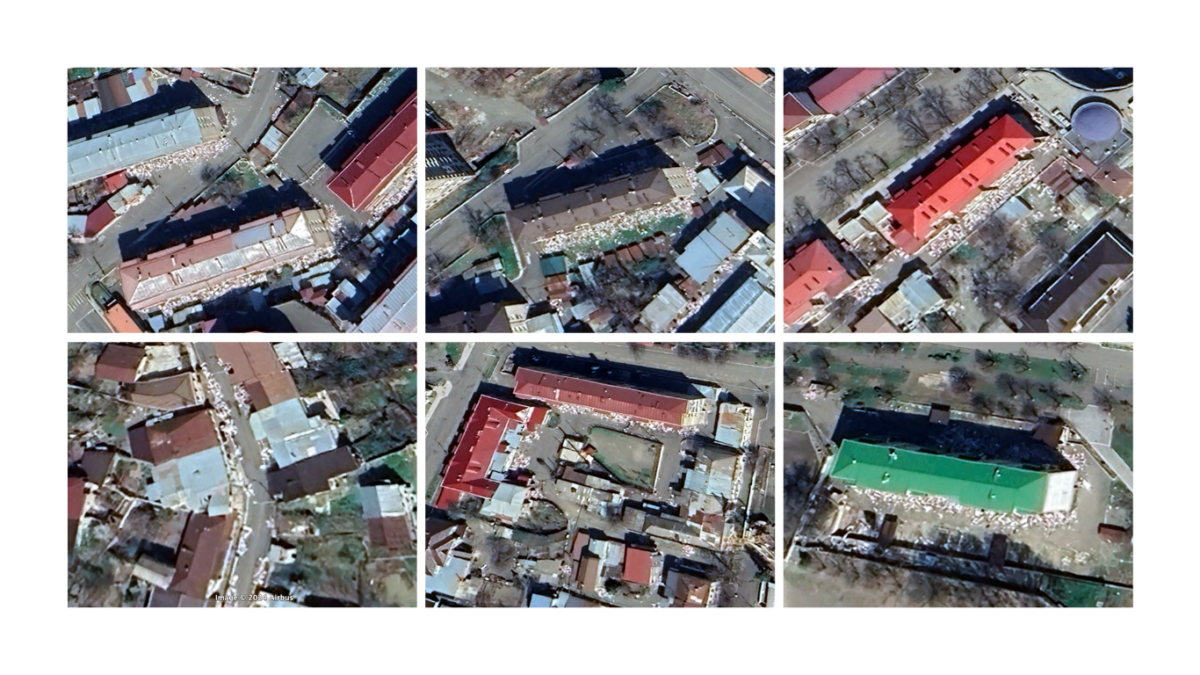
The vast majority of debris piles can be seen directly adjacent to empty residential tower blocks and civilian homes. The city has remained vacant since the mass evacuation of Nagorno-Karabakh’s ethnic Armenian population in September 2023.
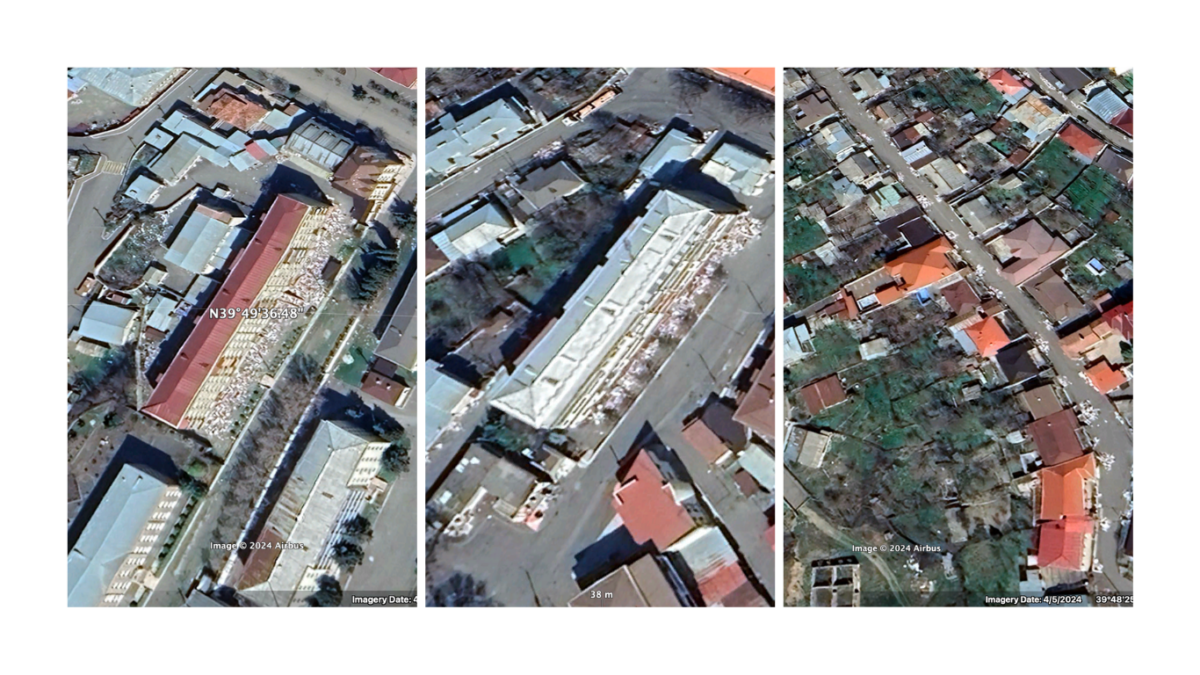
Mapping the frequency of the debris piles, highlights the sheer scale of what looks like the ransacking of civilian homes across the entire city.
In September 2023, more than 100,000 refugees fled Nagorno-Karabakh after Azerbaijan’s military offensive restored the country’s full control over the region.
Nagorno-Karabakh — despite being internationally recognised as part of Azerbaijan — has long been home to a large ethnic-Armenian population. For more than 30 years, it was governed by a self-declared republic, backed by the Armenian government.
The two sides, Armenia and Azerbaijan, must now negotiate their terms for peace, with a critical issue being the right of return for those displaced.
The International Court of Justice (ICJ) issued a preliminary order, calling on Azerbaijan to “ensure that persons who have left Nagorno-Karabakh after 19 September 2023 and who wish to return, are able to do so in a safe, unimpeded, and expeditious manner.”
In response to the ICJ, Azerbaijan said that they have begun to “prepare for the return of those who wish to return.”
Given the satellite evidence of city wide ransacking, Bellingcat contacted the Azerbaijani authorities for comment, but they did not respond.
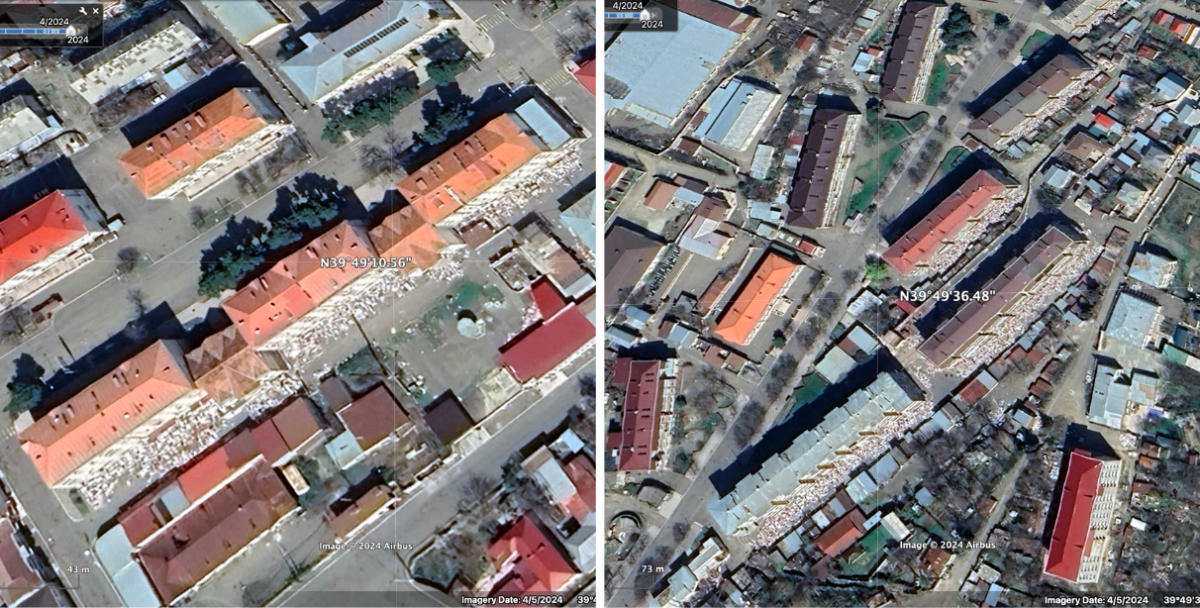
In trying to establish when the hundreds of piles of debris appeared across the city, we were unable to confidently identify them in Planet SkySat images throughout 2024 due to lower-resolution imagery and building occlusion due to the off-nadir angle.We found one video, posted by @armanava1998, an Armenian TikTok account, on August, 25. Filmed by an unidentified man speaking in Azerbaijani, the video shows several men dancing and laughing on a balcony, with numerous piles of what appear to be personal belongings, scattered across the courtyard below.
We were able to geolocate this video to the city centre.
We also geolocated a second video, posted on Tiktok by @t.t..313, to the same location. In this video, a plaque reading: “Qarabag University, student hostel,” is clearly visible at the entrance to the courtyard.
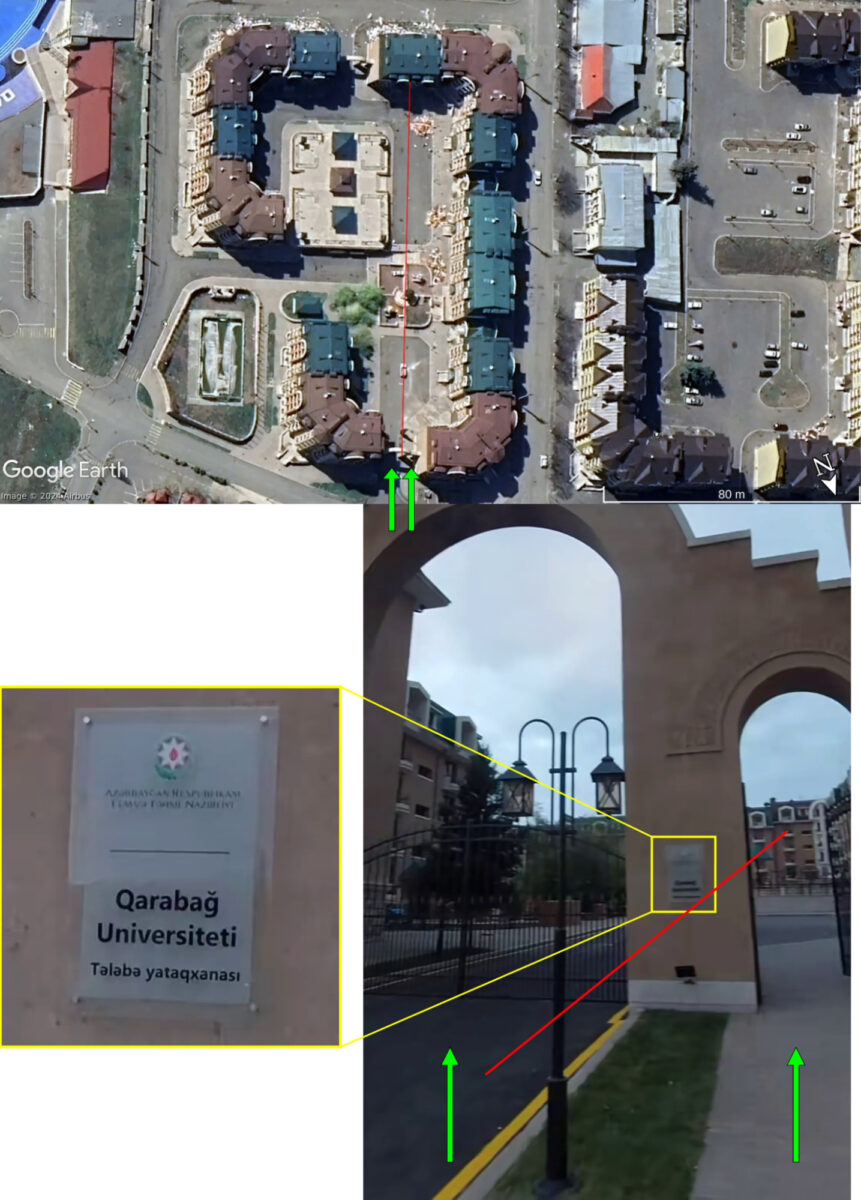
This same location was visited by Azerbaijani President, Ilham Aliyev on September, 20. We geolocated photos posted on his instagram account and published in local media.
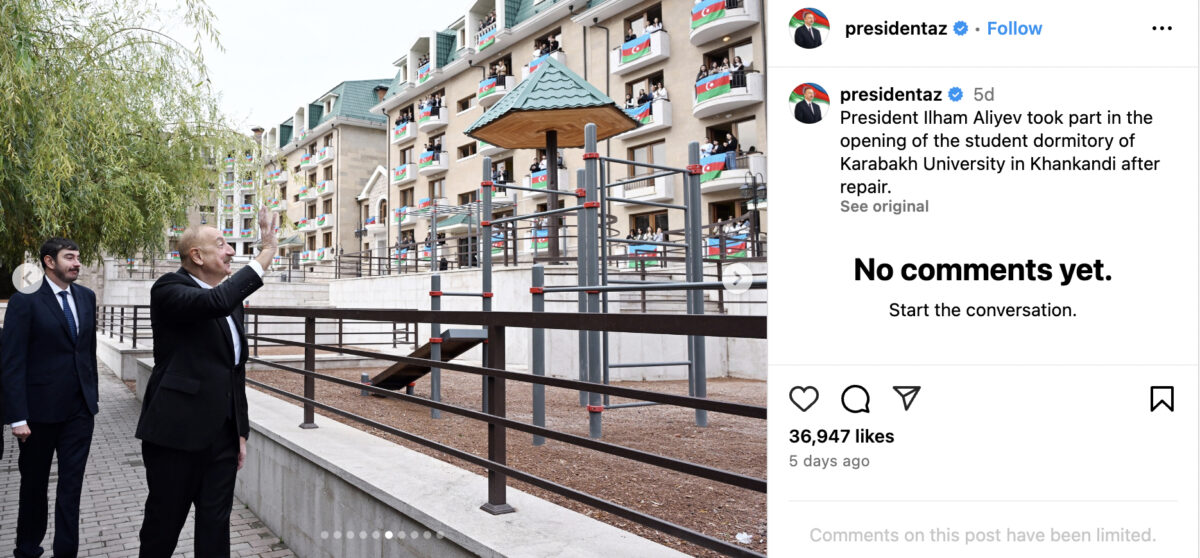
The Azerbaijani government’s plans to renovate the city’s former university were announced in July, though there was no mention of extending the works beyond the campus to other parts of the city.
When asked by Bellingcat for details about their university renovation project and any other developments across the city, the Azerbaijani government did not respond.
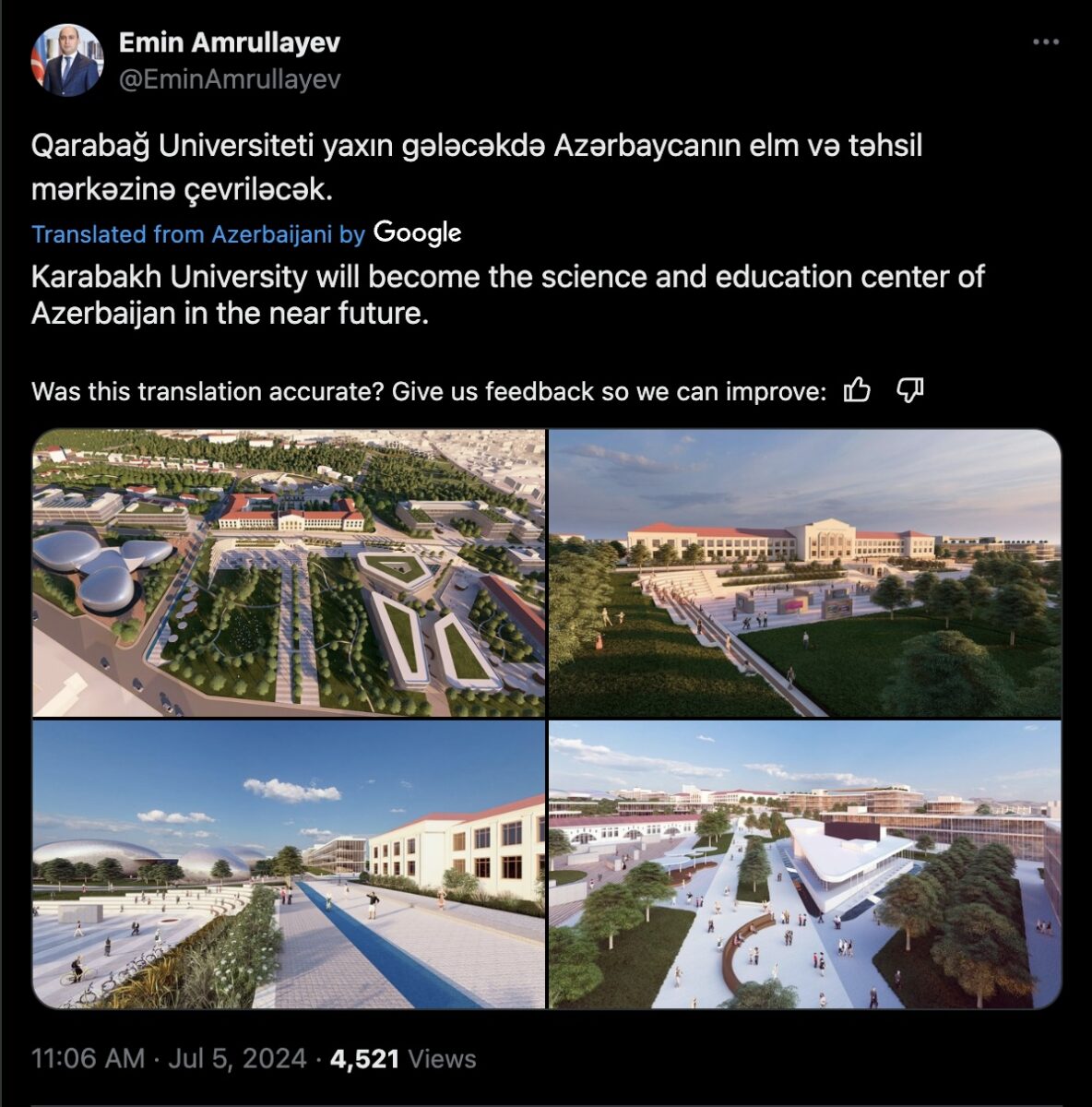
Renovation or ad-hoc demolition?
PlanetScope imagery shows the demolition of buildings close to the university campus began sometime between May 2 and May 9, 2024.
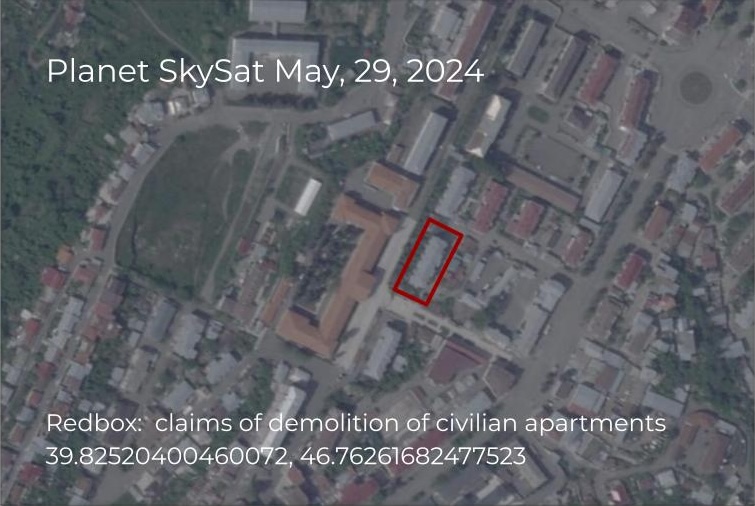
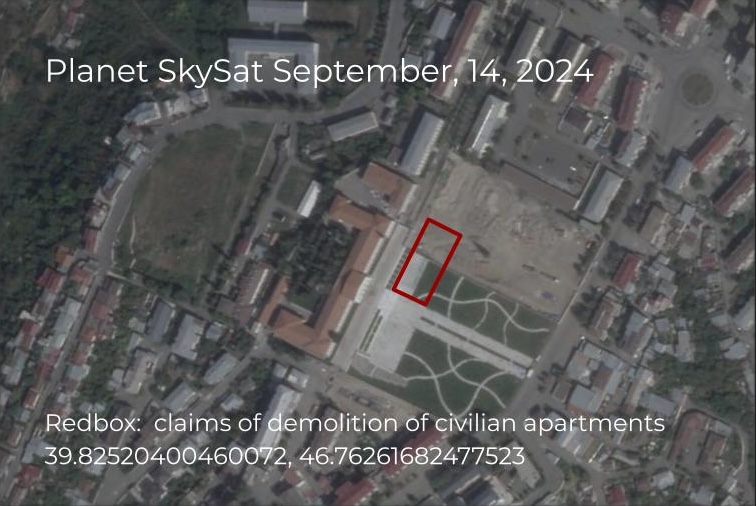
Reports in the Armenian media, as well as many residents say, several of the buildings were civilian homes and destroyed without consultation.
Former resident and teacher, Susanna Mezhlumyan, 63, says that one of the first buildings to be demolished was her home, a 36-unit apartment block.
Mezhlumyan, who was featured in several articles about being a teacher in Stepanakert, and who featured in one video as recently as April 2023, spoke on the phone and shared several other images detailing her home and past life in the city.
She shared with Bellingcat a photo taken from a window in the block she said she used to live in.

Footage uploaded to YouTube in 2021 indeed appears to show apartment buildings opposite the facade of the university.
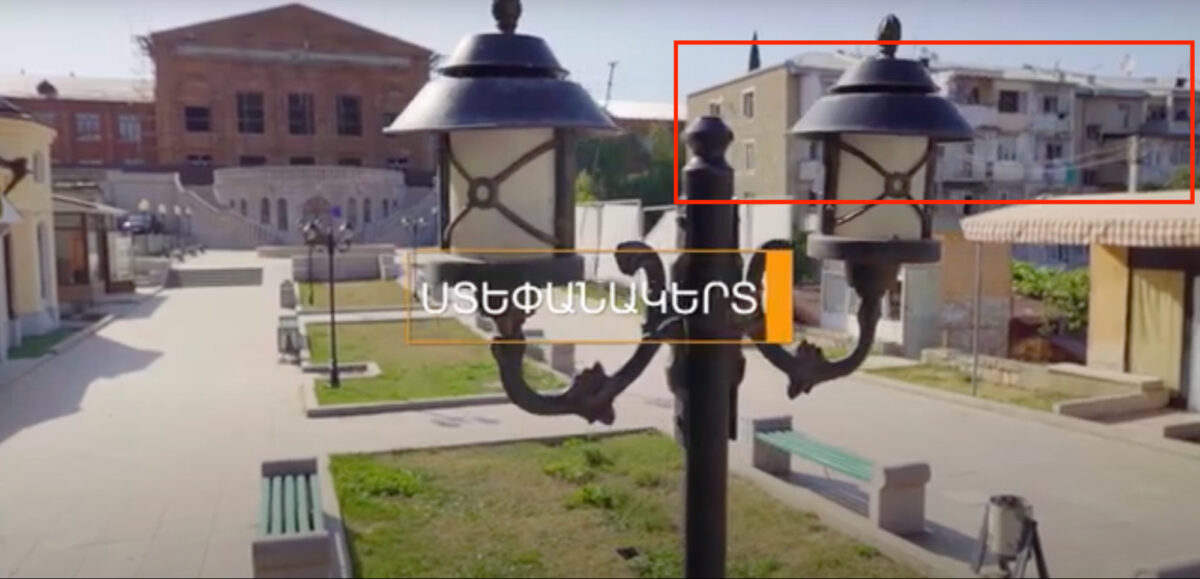
Currently living as a refugee in Armenia, Mezhlumyan says her and her neighbours’ homes were completely demolished without any warning.
Bellingcat asked the Azerbaijani authorities about the demolition of buildings highlighted by Mezhlumyan opposite the university but did not receive a response before publication.
Dunja Mijatović, the Council of Europe’s Commissioner for Human Rights, after visiting the region last year following the exodus of its Armenian population, stressed in her report:
“Persons displaced by the conflict have the right to return to their homes or places of habitual residence under conditions of safety and dignity.”
Additional research by Miguel Ramalho and Logan Williams
Bellingcat is a non-profit and the ability to carry out our work is dependent on the kind support of individual donors. If you would like to support our work, you can do so here. You can also subscribe to our Patreon channel here. Subscribe to our Newsletter and follow us on X here and Mastodon here.
如有侵权请联系:admin#unsafe.sh